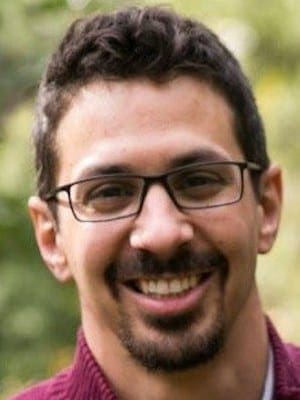We tend to put faces on unfortunate things.
It is not a good practice, but we do it anyways. Famine has African faces, terrorism Muslim faces, the drug trade Latino faces, and on it goes.
So it is with human displacement where the faces of Syrians, Palestinians and the Rohingya have largely come to personify the nightmare of being forced from home and left “out of place” in this world.
Displacement effectively dehumanizes its victims and this dehumanization is intensified when our collective mind associates entire people groups with a particular misery.
Notions are perpetuated that to be Syrian is to be a refugee, to be a refugee is to be like Palestinians, and to be Rohingya is to be stateless.
This tendency to define people by their conditions is regrettable; however, the fact remains that people do suffer conditions, and people have faces.
In a global drama of displacement involving more than 65 million individuals, the Middle East North Africa (MENA) region has assumed center stage.
Within its geography, millions of refugee, internally displaced and stateless men, women and (mostly) children maintain precarious existences in the absence of rights, provisions and a sense of human dignity.
My country of residence, Lebanon, is a type of displacement epicenter boasting the highest global density of displaced persons, which led a government leader to recently describe it as “one big refugee camp.”
Here, the immense weight of displacement is hard to dismiss, but in other locations it is less so.
While the world generally agrees that human displacement is a global problem, many see it as a foreign problem in some other corner of the globe.
The assumption is largely held, “displacement takes place over there, but it is not something that has played out over here.”
However, I believe a nuanced look at our own places and stories will compel us to face human displacement in profound ways.
As a U.S. national, one personal response to the current global displacement crisis has been to examine my home country’s experience with the phenomenon.
The findings are conclusive: The U.S. has been filled with faces of displacement throughout its national experience.
From Indian nations driven from their homelands and confined to reservations by a treaty-breaking government, to masses of Africans captured, sold and held in bondage by a horrific slave trade, to an estimated 3.5 million individuals forced into exodus from Great Plains states during the catastrophic Dust Bowl of the 1930s, human displacement is a central theme in the U.S. narrative.
This is no form of American exceptionalism either; human displacement has sunk its jaws into every corner of the world and left permanent marks everywhere.
In the 20th century alone, the forces of colonialism, world wars, genocides, nation-state formation and civil conflicts resulted in seismic flows of forced migrations that reshaped political, social and demographic landscapes worldwide.
Human displacement has proven historically extensive and intense, and I am convinced that no matter where we stand on the globe we can say, “displacement is part of this place’s story.”
The story in fact goes beyond a history of places. In the Bible, we see that displacement is the fundamental story of humanity.
It all starts, naturally, in Genesis where God fashioned creation as a physical place and created all things to belong somewhere within it.
Humanity itself is formed from the dust of the earth and given a home within a garden.
In this beginning, the Bible attests to our human need for rootedness in places of meaning, a concept expressed theologically as implacement.
Implacement is why we all share a deep desire to belong somewhere in this world and to have a place to call home.
A tragedy of The Fall is that it undermined our need for implacement and left us with its antithesis: displacement.
Sin displaced Adam and Eve from the garden and set the stage for humanity’s struggle to set roots within a world constantly forcing its inhabitants out of place.
In his book “The Land,” theologian Walter Brueggemann states, “Our lives are set between expulsion and anticipation, of losing and expecting, of being uprooted and rerooted, of being dislocated because of impertinence and being relocated in trust.”
This struggle is a defining story of humanity, and stories of every kind – from “The Odyssey” to “The Hobbit” – are steeped in the human quest for home.
Homesickness is indeed universal, but for displaced individuals today it is more than a feeling, it is a state of existence.
The drama of displacement introduced in Genesis unfolds throughout biblical narratives, and Scripture provides copious examples of men, women, families and entire nations enduring an “out of place” condition.
These include:
- Noah and family on the Ark
- The sojourns of Abraham, Sarah, Isaac and Jacob
- Haggar and Ishmael banished to the wilderness
- Joseph trafficked, enslaved and imprisoned in Egypt
- Moses and the Hebrews wandering the Sinai wilderness
- Ruth battling poverty in a foreign land
- David and Elijah fleeing from tyrannical regimes (1 Samuel 21-22; 1 Kings 19)
- Daniel, Esther and ancient Israel in exile
- Mary and Joseph escaping a murderous ruler
- The church of Acts scattered by religious persecution (Acts 8:1-8)
The list could go on, but the message is clear: Human displacement is a faith dilemma.
Brent Hamoud is programs manager for a boys’ home in Mount Lebanon associated with Kids Alive International and oversees a literacy program in South Lebanon. He is a 2016 Institute of Middle East Studies graduate. A version of this article first appeared on the IMES blog and is used with permission. His writings also appear on his blog, and you can follow him on Twitter @ThisHamoud.
Editor’s note: This is the first of a two-part series. Part two is available here.
Programs coordinator at the Arab Baptist Theological Seminary in Beirut, Lebanon.

